When your furry friend suddenly turns their nose up at their food, it can cause concern for any dog owner. Understanding why your dog won’t eat is essential to ensuring their health and happiness. Here are common reasons dogs might refuse their meals.
Health Issues
One of the most concerning reasons your dog might not eat is due to health problems. If your dog seems lethargic, vomits, or has diarrhea along with their loss of appetite, consult your veterinarian. Here are a few health-related issues that can lead to a loss of appetite:
- Dental Problems: Issues such as gum disease or broken teeth can make eating painful.
- Digestive Issues: Conditions like gastritis or pancreatitis can affect your dog’s desire to eat.
- Infections: Illnesses, ranging from viral infections to more serious diseases, can impact how your dog feels and their appetite.
- Medications: Some medications can cause nausea, leading your pet to skip meals.
Dietary Changes
Dogs can be creatures of habit, and sudden changes in their diet may lead to refusal of food. Here are factors regarding dietary changes that could make your dog unwilling to eat:
- New Food Brand: Transitioning to a new food brand or type without a gradual transition can cause your dog to reject their food.
- Flavor Preferences: Just like people, dogs have personal preferences. Your dog may simply dislike the new flavor.
- Food Freshness: Spoiled or stale food is another reason your dog may turn their nose up at their meal.
Environmental Factors
The environment in which your dog eats can also play a significant role in their appetite. Consider the following:
- Stress Factors: Changes such as new family members, moving to a new home, or loud noises can create stress, affecting your dog’s eating habits.
- Eating Space: If another pet dominates their feeding area or if the environment feels unsafe, they may choose not to eat.
- Temperature: On hot days, dogs may not feel like eating as much. Conversely, cold weather can also lead to changed appetites.
Behavioral Reasons
Your dog’s behavior can also be a significant factor when they refuse food. Pay attention to these behavioral aspects:
- Picky Eater: Some dogs develop a habit of being picky about their food, especially if they have been spoiled with treats or table scraps.
- Overfeeding: If your dog has access to too many snacks throughout the day, they may not feel hungry at mealtime.
- Attention Seeking: Sometimes, dogs refuse food as a way to get attention, especially if they notice you reacting to their behavior.
Age-Related Changes
As dogs age, their appetite might change. Older dogs may have less energy and lower activity levels, leading to reduced food intake. Additionally, specific age-related health issues may contribute to a loss of appetite. If your dog is aging and not eating well, consider the following:
- Dental Health: Age can exacerbate dental problems that become painful.
- Kidney Function: Older dogs may face kidney issues that can impact their eating habits.
- Joint Pain: Arthritis and other joint problems can make it difficult for senior dogs to enjoy regular feeding routines.
If your dog’s refusal to eat persists, it’s crucial to seek professional advice. Making sure your pet is healthy and happy is a top priority. Also, consider checking out resources such as AKC for further insights.
Remember that a sudden change in your dog’s eating habits can be a sign of something that needs to be addressed. Monitoring their behavior, health, and environment can give you the clues you need. If changes continue, don’t hesitate to consult a veterinarian for a thorough check-up. Their health and happiness depend on your attention and care.
For more tips and advice on dog care, visit Vetstreet. Understanding and addressing the cause of your dog’s refusal to eat is the first step towards nurturing their well-being.
Nutritional Needs: What Should Your Dog’s Diet Include?
Understanding your dog’s nutritional needs is essential for maintaining their overall health and well-being. When considering what your dog’s diet should include, it’s crucial to focus on a balanced mix of proteins, fats, carbohydrates, vitamins, and minerals. These core components contribute significantly to their energy levels, immune system, and overall vitality.
Proteins
Proteins serve as the building blocks for your dog’s muscles, skin, and other tissues. High-quality protein sources are vital for growth and repair. Dogs require a diet rich in animal-based proteins. Here are some excellent sources:
- Chicken
- Beef
- Fish
- Lamb
- Eggs
Including a variety of these protein sources can also help avoid food allergies and keep mealtimes interesting.
Fats
Fats are also an important part of your dog’s diet. They provide concentrated energy and help in the absorption of fat-soluble vitamins (A, D, E, K). Healthy fats improve skin health and maintain a shiny coat. Consider adding:
- Fish oil (rich in Omega-3 fatty acids)
- Flaxseed oil
- Chicken fat
Remember, however, that fats should be included in moderation to prevent obesity.
Carbohydrates
While dogs do not have a strict need for carbohydrates in their diet, they can offer a good energy source. some digestible carbohydrates can support digestive health. Options include:
- Brown rice
- Sweet potatoes
- Oats
These sources can provide fiber, which aids in healthy digestion and keeps your dog feeling full.
Vitamins and Minerals
A well-rounded diet should also include various vitamins and minerals. Each nutrient plays a unique role in promoting health:
- Vitamin A: Great for eye health and immune function.
- B Vitamins: Essential for energy metabolism.
- Vitamin D: Helps with calcium regulation for bone health.
- Calcium and Phosphorus: Vital for strong bones and teeth.
Commercial dog foods often contain added vitamins and minerals, but you may need to supplement your dog’s diet depending on their specific needs.
Water
No diet is complete without fresh, clean water. Always ensure your dog has access to water, as hydration is vital for overall health. Dehydration can lead to serious health issues, especially in warmer months.
Special Considerations
Some dogs may have specific dietary needs based on their age, size, breed, and health conditions. Puppies require a diet that supports their rapid growth while senior dogs may need fewer calories and more fiber to aid digestion. Always consult your veterinarian to tailor a diet plan that addresses your dog’s unique requirements.
| Nutrient | Benefits |
|---|---|
| Proteins | Builds muscles and tissues |
| Fats | Provides energy and supports skin health |
| Carbohydrates | Offers energy and aids digestion |
| Vitamins & Minerals | Boosts immune system and promotes overall health |
Always remember that switching your dog’s diet should be done gradually to avoid gastrointestinal upset. Mix their old food with the new one over a week to allow their digestive system to adapt. If you notice any signs of distress or food intolerance during this transition, consult your vet immediately.
For more detailed information on how to meet your dog’s specific nutritional needs, consider visiting the PetMD Nutrition page. They provide an in-depth look at dog nutrition and advice from veterinary professionals.
Taking the time to understand and implement a balanced diet for your dog can significantly enhance their quality of life. A healthy dog is a happy dog! You may also want to refer to the American Kennel Club for tips on selecting the right food suitable to your dog’s lifestyle and dietary requirements.
Behavioral Factors: How Stress and Environment Affect Eating Habits
Eating habits are not just shaped by hunger; they are greatly influenced by behavioral factors such as stress and the surrounding environment. Understanding these factors can help you and your loved ones improve overall well-being. When it comes to stress, it’s essential to recognize the signs and effects it has on eating behaviors.
Understanding Stress and Its Impact on Eating
Stress can do strange things to our appetites. For some, it may cause an increase in cravings for comfort foods, while for others, it can lead to a significant decrease in appetite. This reaction often depends on individual responses to stressors and previous experiences. Here are some common ways stress affects eating:
- Emotional Eating: Many people turn to food for solace when feeling stressed or anxious. High-sugar or high-fat comfort foods can provide temporary relief but may lead to unhealthy habits.
- Loss of Appetite: Conversely, stress can lead to a lack of desire to eat, which may be concerning over time.
- Altered Metabolism: Prolonged stress can affect metabolism, making it harder for your body to process food effectively.
- Mindless Eating: Stress may also lead to distractions, causing individuals to eat without being mindful, which can result in overeating.
The Role of Environment
Your surroundings play a crucial role in shaping your eating habits. An environment rich in healthy food options encourages better choices, while a lack of access to nutritious foods often results in unhealthy eating. Here’s how environment affects your diet:
- Availability of Food: Urban areas typically offer better access to fresh produce compared to rural settings. Understand your local landscape and seek healthy food sources.
- Social Influences: Eating habits can be heavily influenced by peers and family. If those around you eat unhealthy foods or have poor eating habits, it can become a challenge to maintain a balanced diet.
- Stressful Environments: Living or working in high-stress environments may contribute to poor dietary choices. Taking small breaks or creating a calm atmosphere can help mitigate the impact.
Practical Strategies to Function Better
There are actionable steps you can take to manage stress and improve your eating habits:
- Mindfulness: Practice mindfulness while eating. Take your time, focus on your food, and savor each bite. This helps reduce mindless eating.
- Meal Planning: Plan your meals ahead. This strategy ensures you have healthy options readily available, reducing the chances of falling back on unhealthy snacks.
- Exercise Regularly: Physical activity is a great stress reliever and can positively influence your eating habits by boosting your mood.
- Seek Support: Don’t hesitate to reach out to professionals, such as nutritionists or counselors, who can provide directed guidance in managing dietary and stress issues.
Recognizing Signs of Stress Eating
It’s vital to recognize the signs that your eating is influenced by stress. Here are some indicators:
| Behavior | Indicator |
|---|---|
| Craving Specific Foods | Often seeks comfort foods during stressful moments. |
| Binge Eating | Consuming large quantities of food in one sitting. |
| Skipping Meals | Regularly misses meals due to stress or busy schedules. |
| Emotional Changes | Feeling guilty or bad about eating choices but continuing the behavior. |
Learning how stress and environment affect your eating habits is essential for a healthier lifestyle. Create a supportive environment and practice strategies to minimize stress. Remember to check out resources like the Academy of Nutrition and Dietetics or the National Institute of Mental Health for more information on how to create a balanced approach to diet and stress management.
With awareness and supportive tactics, you can better navigate the complex relationship between stress, environment, and eating. Take it one step at a time for lasting change.
Health Concerns: When to See a Vet for Your Dog’s Refusal to Eat
When your dog suddenly refuses to eat, it can be alarming. Nutrition is crucial for maintaining their energy levels and overall health. It’s important to recognize that various factors can contribute to a dog’s reluctance to eat, ranging from minor issues to serious health concerns. Understanding when to consult a veterinarian is essential for your pet’s wellbeing.
There are several potential reasons why your dog might not be eating. Some of the common causes include:
- Illness: Dogs can become sick just like humans. When they’re feeling unwell, their appetite may decrease.
- Dental Problems: Issues such as gum disease or broken teeth can make eating painful for your dog.
- Stress or Anxiety: Changes in the household, such as moving, new pets, or even loud noises can lead to a loss of appetite.
- Dietary Changes: If you’ve recently changed your dog’s food, they may refuse to eat the new brand or flavor.
- Age: Older dogs often experience a decrease in appetite due to health complications or aging-related conditions.
While a few days without eating may not be a cause for immediate concern, there are specific signs you should watch for. If your dog displays any of the following symptoms, it’s time to visit the vet:
- Loss of interest in water
- Vomiting or diarrhea
- Extreme lethargy or weakness
- Change in behavior, such as hiding or aggression
- Weight loss
- Persistent refusal to eat for more than 24 hours
Your role as a pet owner is to be observant. Keep a close eye on your dog’s eating habits, and document any changes. This information can be crucial for your veterinarian. Here are some questions you might want to consider before your visit:
- How long has it been since your dog ate?
- Have there been any changes in their water intake?
- Are there any signs of pain or discomfort when they eat?
- Have you had any recent changes in their environment?
Once you visit the veterinarian, they will likely perform a complete physical examination. This may include:
- Assessing weight and hydration
- Examining the mouth for dental issues
- Checking body temperature for signs of fever
Depending on their findings, the veterinarian may recommend further testing, such as:
- X-rays to check for obstructions
- Blood tests to look for underlying health issues
- Fecal tests if gastrointestinal issues are suspected
Sometimes the solution is simple. Your vet may suggest a more enticing diet or changes in mealtime routines. They might recommend adding warm water or broth to dry food, which can encourage your dog to eat.
In cases where a serious health issue is identified, prompt action is crucial. Conditions like pancreatitis, kidney disease, or even cancer can cause a refusal to eat and require immediate medical attention. Early diagnosis and treatment can significantly improve your dog’s prognosis.
For more in-depth information about your dog’s dietary concerns and health-related issues, you can visit AKC’s guide on dog nutrition or check ASPCA’s resources on common dog ailments.
Keeping an eye on your dog’s eating patterns and behavior is essential. It’s always better to err on the side of caution, so if you have any doubts, don’t hesitate to seek professional care. Your dog’s health depends on prompt and effective medical attention when they aren’t eating properly.
Tips and Tricks: Encouraging Your Dog to Enjoy Mealtime Again
When your dog won’t eat, it can be quite concerning. You want to ensure that your furry friend gets the nutrition they need. There are various reasons why your dog may be turning their nose up at mealtime. Understanding these reasons can help you find methods to encourage them to eat again.
One of the first steps is to assess their health. Sometimes, a lack of appetite can signal a health issue. If your dog has suddenly stopped eating their food, it’s wise to consult with your veterinarian. They can rule out any underlying conditions that could be causing this behavior.
Here are some practical tips you can try to entice your dog to eat:
- Change the Food: Your dog may be bored with their current food. Experimenting with different flavors or brands could spark their interest.
- Warm Up the Food: Slightly warming your dog’s food can enhance its aroma, making it more appealing. Try microwaving their food for a few seconds.
- Incorporate Some Sloppy Goodness: Adding wet food, broth, or even a little plain yogurt might make their meal more enticing.
- Establish a Routine: Dogs thrive on routine. Set specific feeding times, and stick to them. Remove uneaten food after 30 minutes.
- Reduce Treats: If your dog is getting too many treats or table scraps, it might be affecting their appetite. Monitor the treats you give and consider cutting back.
- Make Mealtime Interactive: Try using puzzle feeders or slow feeder bowls. Making mealtime a fun, engaging experience can help stimulate your dog’s interest in their food.
Another important aspect to consider is the mealtime environment. A quiet, relaxed space is ideal. If there are loud noises or distractions, your dog may feel uneasy and refuse to eat. Creating a calm feeding area can help your dog feel more comfortable.
Sometimes stress or anxiety can also lead to a decrease in appetite. Dogs, just like humans, can experience emotional ups and downs. If there have been recent changes at home—like a new pet, moving, or family changes—these could affect your dog’s eating habits. In such cases, offering extra love and reassurance can go a long way.
Some healthy homemade recipes can also make a significant difference. Here are a couple of simple and nutritious ideas:
| Recipe | Ingredients | Instructions |
|---|---|---|
| Chicken and Rice | Chicken breast, brown rice, carrots | Cook chicken and rice separately. Combine and add steamed carrots. |
| Vegetable Stew | Potatoes, carrots, green beans | Boil vegetables until tender. Mash together and serve. |
It’s also worthwhile to consider the age and breed of your dog. Older dogs may require a different dietary approach due to changing nutritional needs. Specialized senior dog foods are available that could restore their interest in eating. Working closely with your vet to determine the best options is always advisable.
If none of these strategies work, you might want to review the type of food you’re offering. Sometimes, dogs can be sensitive to certain ingredients. Consulting with a veterinarian can help identify any potential allergens or unwanted components in their diet. Consider transitioning to a limited ingredient dog food if suspecting food sensitivity.
For additional guidance and support while navigating your dog’s eating challenges, you may want to visit resources like AKC’s article on dog nutrition or Chewy’s pet nutrition tips. They offer valuable insights that can help you ensure your dog enjoys their mealtime once more.
Ultimately, patience is key. With a little time, love, and experimentation, you can help your dog regain their appetite and enjoy their meals again. Always remember to keep an eye on their overall condition and reach out to professionals when needed to ensure their continued health and happiness.
Conclusion
As you navigate the complexities of your dog’s eating habits, understanding the reasons behind their refusal to eat is crucial. Common causes can range from dietary preferences to underlying health issues. Recognizing your dog’s nutritional needs is essential—make sure their diet is well-balanced and tailored to their specific requirements.
Behavioral factors can also play a significant role in your dog’s reluctance to eat. Stress and environmental changes might upset their routine and create anxiety around mealtime. When such situations arise, it’s important to assess your dog’s surroundings and introduce positive changes to help them feel more secure.
Additionally, don’t overlook the possibility of health concerns. If your dog’s refusal to eat persists, consulting a veterinarian can help rule out any serious issues. Regular check-ups will ensure that any health-related problems are handled promptly.
To get your dog to enjoy mealtime again, consider trying different methods. Create a pleasant eating atmosphere, experiment with various food types, or incorporate some of their favorite treats to make meals more enticing. Patience and understanding can go a long way in reviving your dog’s appetite.
By connecting the dots between their diet, environment, health, and behavior, you can pave the way for a healthier, happier eating experience for your furry friend. With the right approach and attention, you’ll soon see your dog happily anticipating mealtime once more.




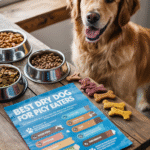
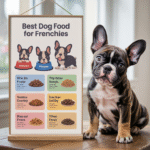


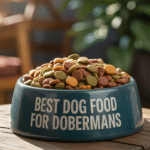


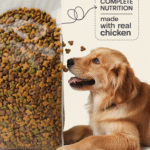


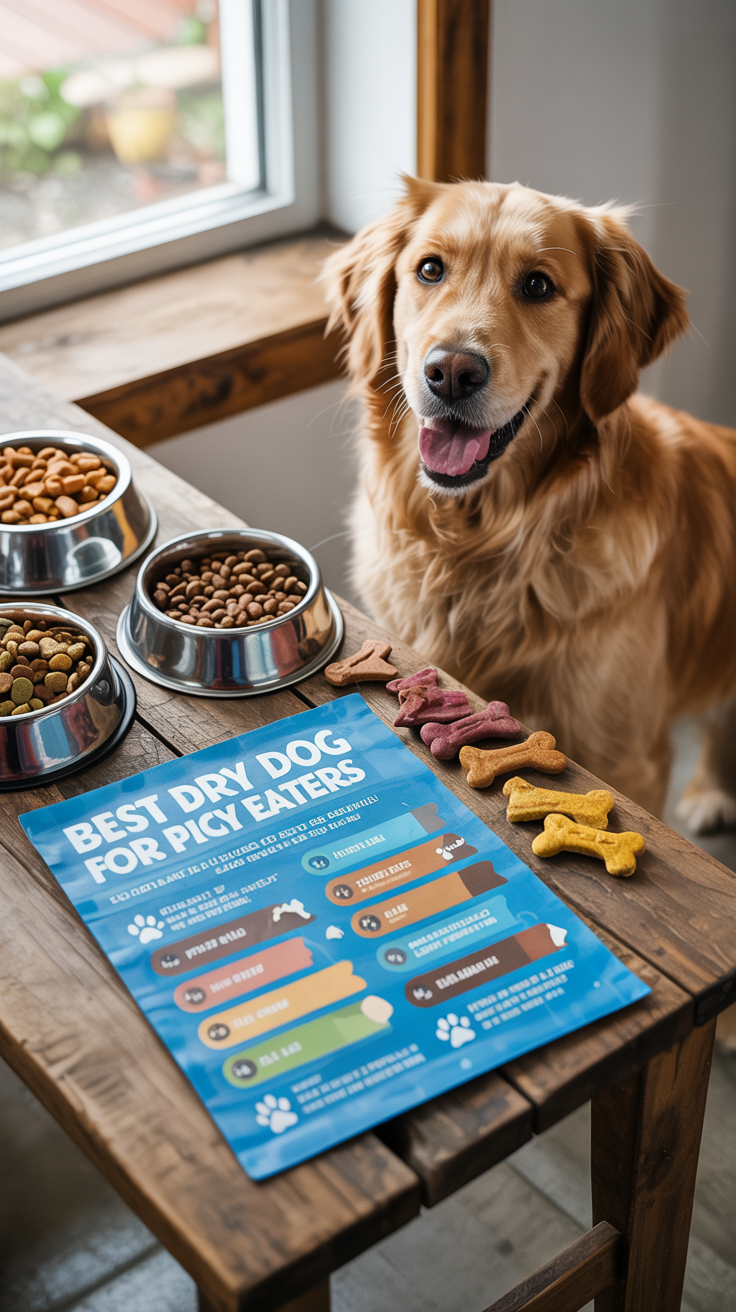
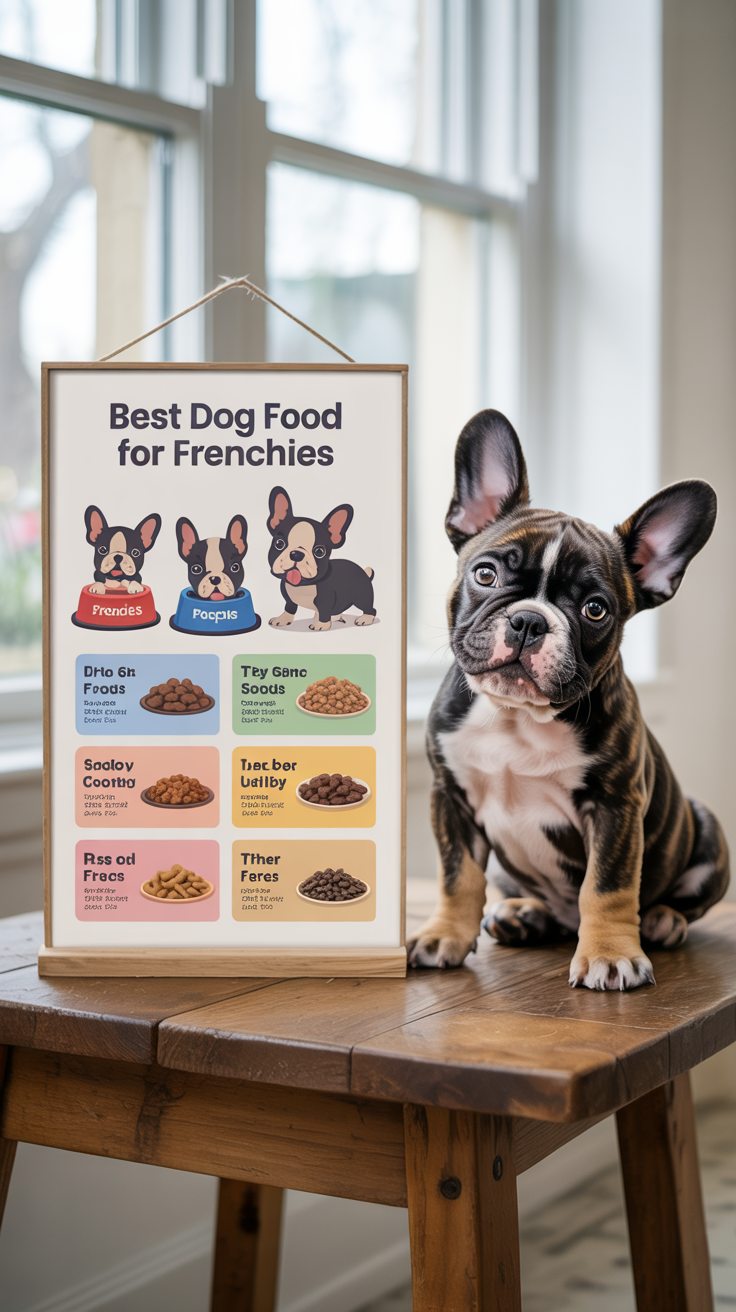
Leave a Reply